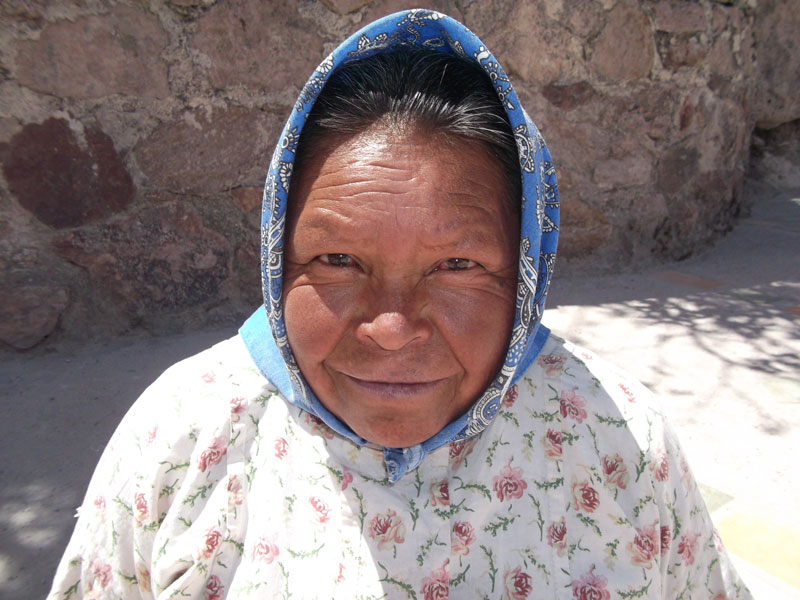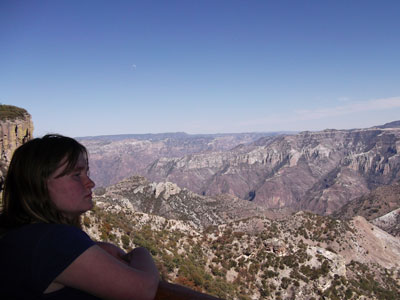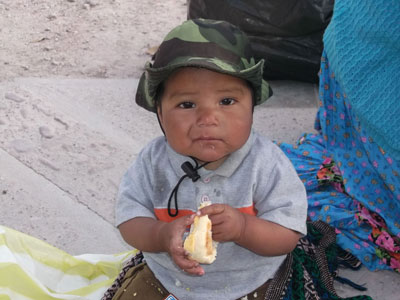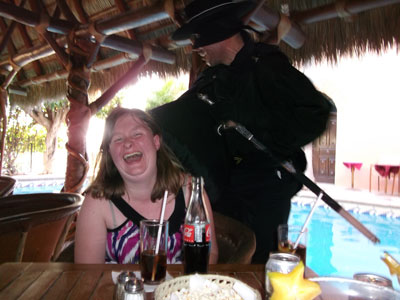Discovering Mexico’s Copper Canyon
This item appears on page 59 of the August 2014 issue.
My granddaughter, Allie, and I visited Mexico’s Copper Canyon in April 2014 as guests of S&S Tours, traveling there by bus and train from Phoenix, Arizona. Several aspects of the trip remain firmly embedded in our memories: the train ride, a close encounter with El Zorro, the Tarahumara people and the canyon, itself.
The train
The relatively little-known railway Ferrocarril Chihuahua al Pacifico (commonly known as “Chepe”) provides, in my opinion, one of the most scenic train rides in the world. The line stretches from Los Mochis, on the Sea of Cortez (Gulf of California), northeast through the Sierra Madre mountains to the city of Chihuahua in north-central Mexico. (See map on the railroad's website.) In the May 1974 Reader’s Digest, it was hailed as “The most Dramatic Train Ride in the Western Hemisphere.”
There are 87 tunnels on the route, but our trip took in only about 120 miles of the 418-mile route. Allie stopped counting tunnels at 36; one of them was more than a mile long.
And it was uphill all the way, climbing to more than 7,200 feet in several hours, sometimes doubling back while climbing. The rail line was designed to be a land shortcut for transporting goods from the American Southwest to the Sea of Cortez, where cargo and passengers could be economically transported to the Orient by water. It was finally completed in 1961.
Early estimates had the construction of the railroad taking five years. With various delays, it took almost 90 years. The cost, originally estimated at $500,000, ultimately escalated to $90 million. The number of tunnels went from an estimated 10 or 15 to, finally, 87, with 39 bridges.
The biggest challenge was the ascent at Témoris. Three levels were finally constructed, including a 180-degree turn inside the mountain — an astounding engineering accomplishment!
The track on our segment was mostly clinging to the steep side of a deep, forested gorge. It was so close to the edge that we could look out the right side of our car straight down to the small river below. It’s a wonder how this route was built.
The cars wobbled enough to make it difficult to make one’s way to the best viewing areas, which were between the cars.
El Zorro
Before our bus reached the canyon, we stayed two nights at Posada del Hidalgo in El Fuerte, Sinaloa. (All the hotels on the trip were very nice, with excellent food.)
At the posada’s happy hour (two margaritas for $6), we were surprised to be met by El Zorro, himself, in full black costume and mask, a long sword at his side. Accompanied by a mariachi trio, he flirted and danced with the ladies, asking each and every one, “Are you married?” A memorable couple of evenings!
The next morning, we met El Zorro out of costume — a very handsome young member of the hotel staff.
The Tarahumara people
Finally, we arrived at the Copper Canyon, home to the Tarahumara people. Because travel in the area is on foot on steep, rocky, mountain paths, the Tarahumaras have developed world-class, long-distance endurance running skills.
The following, referring to a 100-kilometer (62-mile) race, is quoted from an S&S Tours leaflet: “In the 1993 Leadville (CO) Trail 100 ultramarathon, the first, second and fifth place winners were Tarahumaras. Victoriano Churro, 55, won the race in 20 hours, 2 minutes, 33 seconds. Most of the trail is over 10,000 ft. elevation and twice crosses the Hope Pass at 12,600 ft. elevation.
“The three did it their own way by discarding the fancy running shoes they had been given at the aid station, 13½ miles into the race, and putting on the sandals (made) from the tires they had picked up at the Leadville junkyard… .
“They have been known… to run a deer to exhaustion. Then they shoot it with an arrow and take it home.”
The Copper Canyon
The Copper Canyon is in the northwest of Mexico, about 400 miles south of Phoenix, Arizona, and about 100 miles inland from the Sea of Cortez.
Where Arizona’s Grand Canyon is orange-toned rock dug by the Colorado River, Mexico’s Copper Canyon is an alpine environment produced by mountain-building plate tectonics. The Copper Canyon system is four times the area of the Grand Canyon and in places is deeper.
In a cold winter, the native people simply move down into the canyon floor, where there is a tropical climate year-round.
Our room at Hotel Mirador was at the very lip of the canyon! From the edge of the short deck, I could have dropped a pebble over the railing and it would have gone to the bottom of the canyon with just one bounce! From this marvelous spot, we had a magnificent panoramic view of the canyon extending to the horizon.
The Copper Canyon has long been a tourist destination, and, lately, attractions have been added, including a 5-mile-long zip-line system, a cable car ride over a segment of the canyon and lots of hiking trails.
Safety issues
We’re all aware of the drug-related issues in Mexico. In our four days traveling from Phoenix to the canyon and back on a large, comfortable bus, all we saw on this itinerary was a fairly prosperous Mexico, with no signs of safety issues. To protect against theft, however, there was an armed guard on the train.
Amenities on our bus included air-conditioning, a bathroom and movies.
Additional information
For more on the Tarahumara Indians’ running skills, find this book in your local library: “Born to Run: A Hidden Tribe, Superathletes, and the Greatest Race the World Has Never Seen” by Christopher McDougall (2011, Knopf Doubleday).
There are great audiovisual segments on YouTube.com, Punch up “Ferrocarril Chihuahua al Pacifico” and “Mexico’s Copper Canyon.”
Although the classic movie “The Treasure of the Sierra Madre,” with Humphrey Bogart, was filmed primarily in Durango, Mexico, watching it again will give you a feel for the mountainous area we traveled through.
S&S Tours
The 9-day trip we took with S&S Tours costs $1,195 per person, double occupancy, or $1,395, single. Departures are scheduled in February-April and September-November.
S&S Tours is a Copper Canyon specialist with numerous itineraries in Mexico other than the bus/train trip I described. Additionally, they offer itineraries in Costa Rica, South America and Spain.
Contact S&S Tours, LLC (4250 S. Hohokam Dr., Sierra Vista, AZ 85650; 866/780-2813 or 520/803-1352, www.ss-tours.com or www.coppercanyon.com).
Happy trails!




